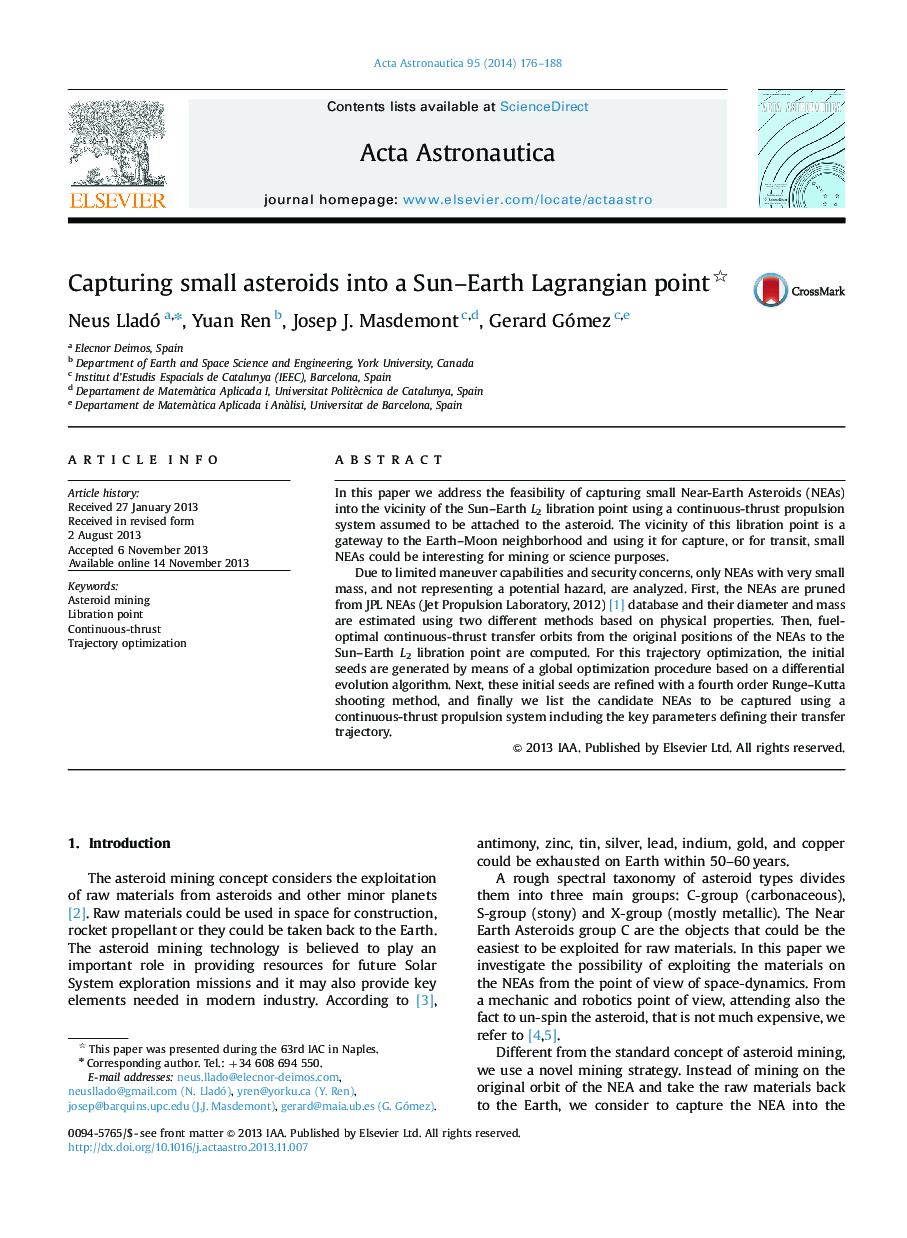| Article ID | Journal | Published Year | Pages | File Type |
|---|---|---|---|---|
| 1714686 | Acta Astronautica | 2014 | 13 Pages |
•Research performed with the smallest asteroids within the Earth's neighborhood.•Method found to find continuous-thrust optimization trajectories to capture asteroids in L2.•It is a robust procedure which enables a massive exploration of the candidates.•Converged solution achieved for all asteroids and mass estimation combinations.•The paper contains a list of asteroids capable to be captured by a continuous-thrust engine.
In this paper we address the feasibility of capturing small Near-Earth Asteroids (NEAs) into the vicinity of the Sun–Earth L2 libration point using a continuous-thrust propulsion system assumed to be attached to the asteroid. The vicinity of this libration point is a gateway to the Earth–Moon neighborhood and using it for capture, or for transit, small NEAs could be interesting for mining or science purposes.Due to limited maneuver capabilities and security concerns, only NEAs with very small mass, and not representing a potential hazard, are analyzed. First, the NEAs are pruned from JPL NEAs (Jet Propulsion Laboratory, 2012) [1] database and their diameter and mass are estimated using two different methods based on physical properties. Then, fuel-optimal continuous-thrust transfer orbits from the original positions of the NEAs to the Sun–Earth L2 libration point are computed. For this trajectory optimization, the initial seeds are generated by means of a global optimization procedure based on a differential evolution algorithm. Next, these initial seeds are refined with a fourth order Runge–Kutta shooting method, and finally we list the candidate NEAs to be captured using a continuous-thrust propulsion system including the key parameters defining their transfer trajectory.
